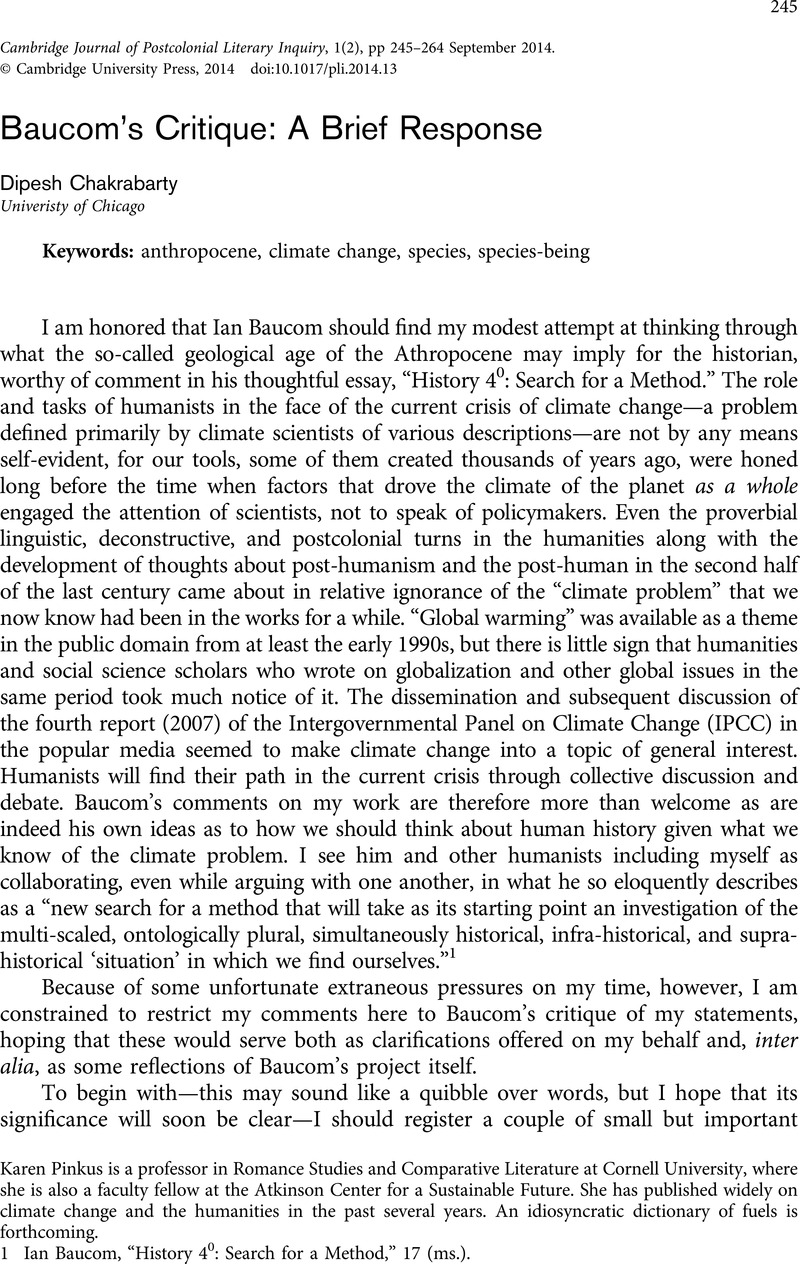Published online by Cambridge University Press: 27 June 2014

1 Ian Baucom, “History 40: Search for a Method,” 17 (ms.).
2 Baucom, “History 40,” 28, 31.
3 Hey, Jody, “On the Failure of Modern Species Concepts,” Trends in Ecology and Evolution 21.8 (August 2006): 447–450CrossRefGoogle Scholar; Hey, , Genes, Categories and Species (Oxford and New York: Oxford University Press, 2001)Google Scholar.
4 Baucom, , “History 40,” 29–30Google Scholar.
5 Baucom, , “History 40,” 31Google Scholar.
6 Rockström, Johanet al, “A safe operating space for humanity,” Nature 461.24 (September 2009): 472–475CrossRefGoogle Scholar.
7 Haff, P. K., “Technology as a Geological Phenomenon: Implications for Human Well-Being,” Geological Society, London: Special Publications, October 24, 2013Google Scholar. Thanks to Jan Zalaciewicz for sharing a copy of this essay.
8 See my essay, “Postcolonial Studies and the Challenge of Climate Change,” in New Literary History, 43.1 (Winter 2012).
9 Archer, David, The Long Thaw: How Humans Are Changing the Next 100,000 Years of Earth’s Climate (Princeton, N. J.: Princeton University Press, 2009)Google Scholar, 6.
10 See, for instance, Lisa-ann Gershwin’s fascinating study suggesting how we are returning the seas back to a state when they were dominated by jellyfish: Stung! On Jellyfish Blooms and the Future of the Ocean (Chicago: The University of Chicago Press, 2013).
11 Spivak, Gayatri Chakravorty, “Imperative to Re-Imagine the Planet,” An Aesthetic Education in the Era of Globalization (Cambridge, Mass.: Harvard University Press, 2012)Google Scholar, 338.